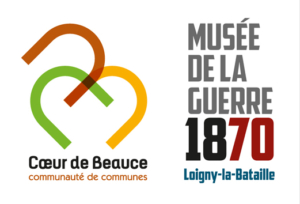Plaz of December 2, 1870
28140 Loigny-la-Bataille
Parking nearby
Full price: € 6
Reduced price *: € 4
* 6-17 years old, veterans, students, job seekers, handicaped persons
Free for children up to 5 years
The Museum is open from March 3, 2024 to November 3, 2024.
Tuesday to Friday: 2 p.m. to 6 p.m.
Sunday and public holidays: 2 p.m. to 6 p.m.
Saturday (only in July, August): 2 p.m. to 6 p.m.
The Museum is closed on May 1st.
All the museum is translated in english
(except the exhibitions temporary)
02 37 36 13 25
For any booking of guided tours or workshops (schools, groups): mediation@museedelaguerre1870.fr
For any questions related to collections and the History of the 1870 war: collections@museedelaguerre1870.fr
